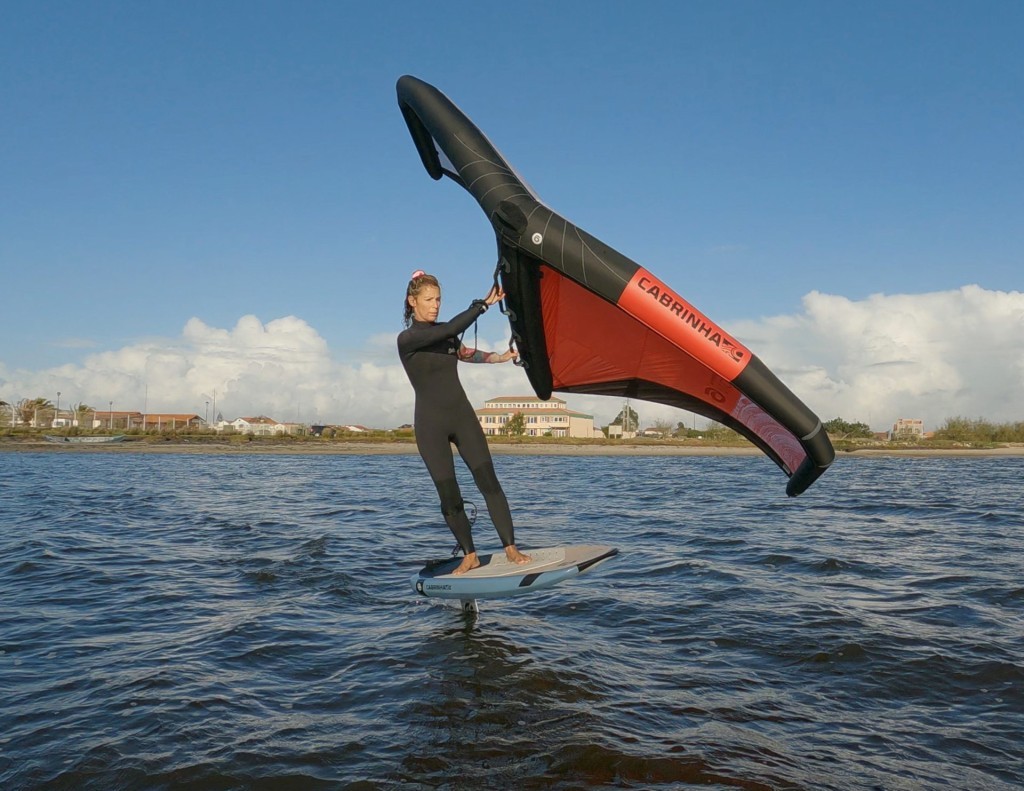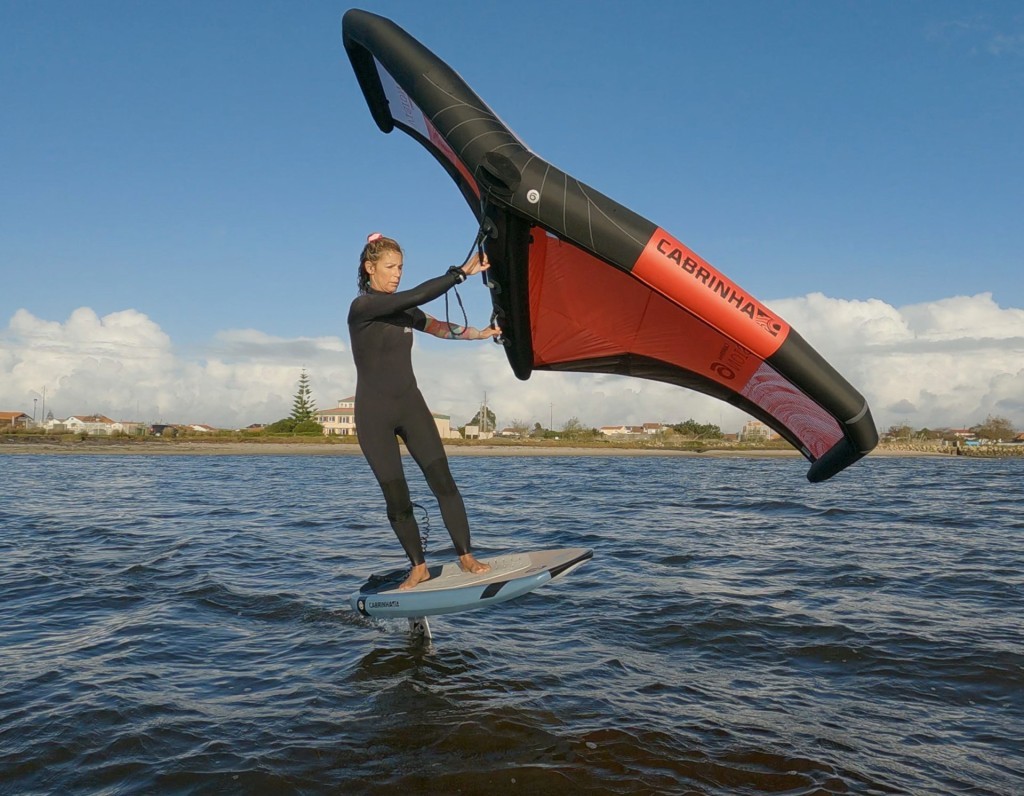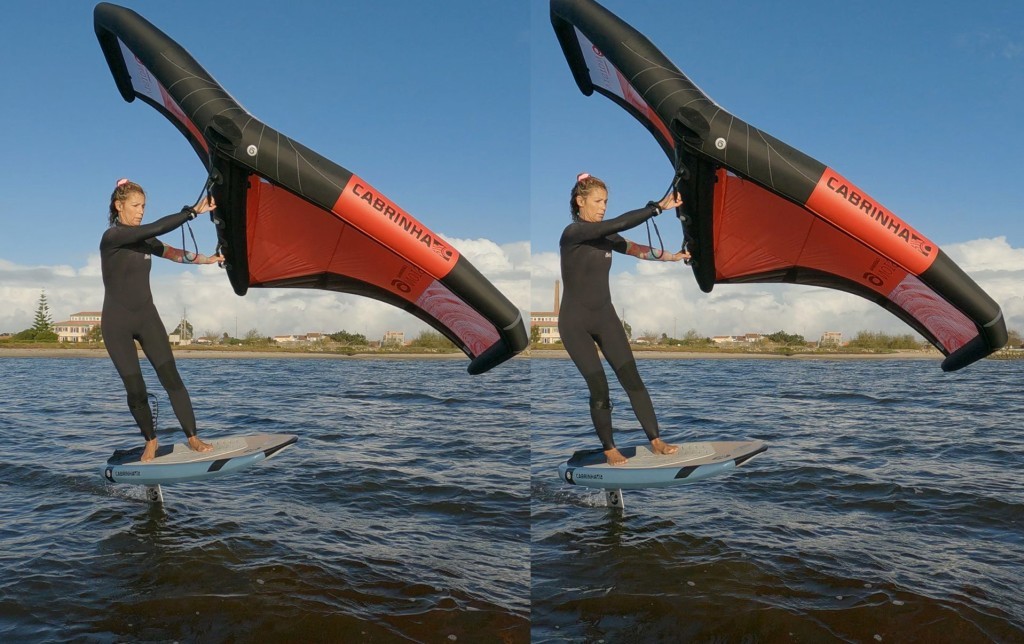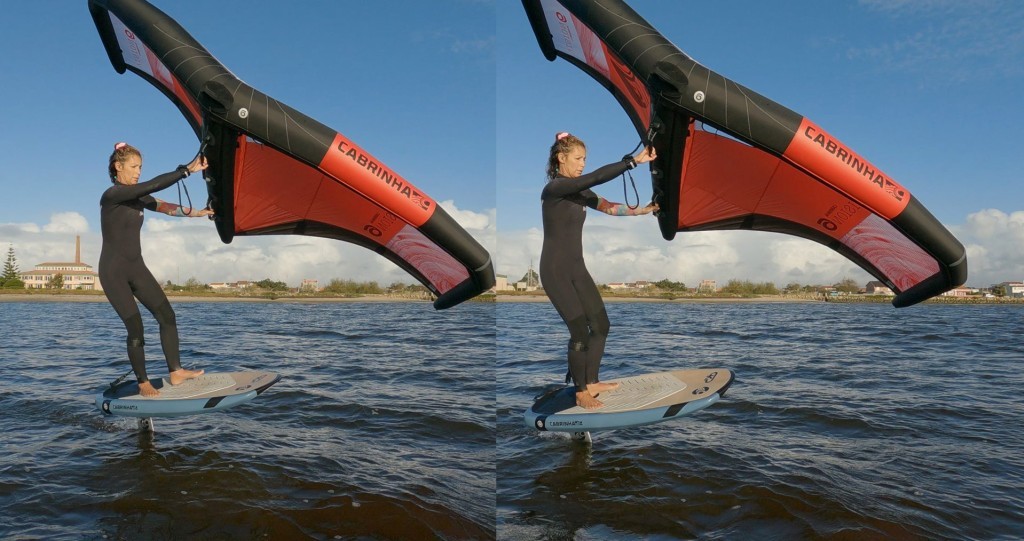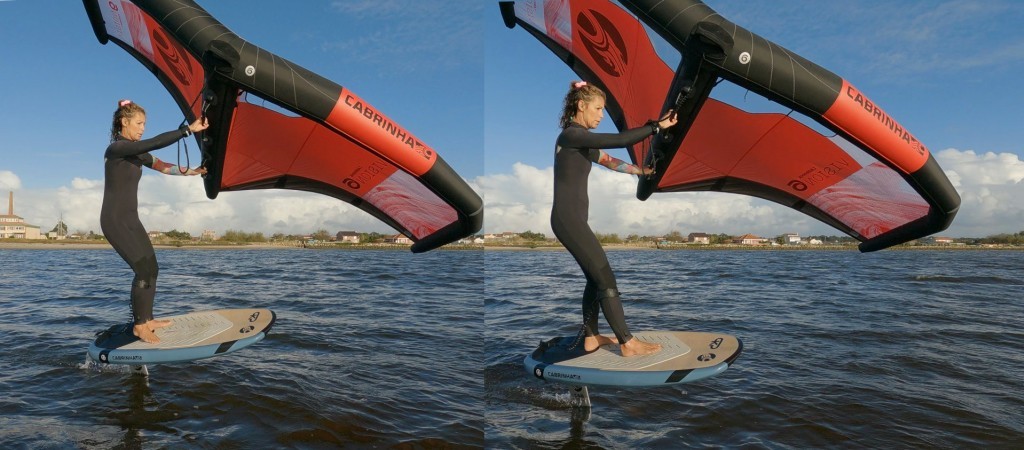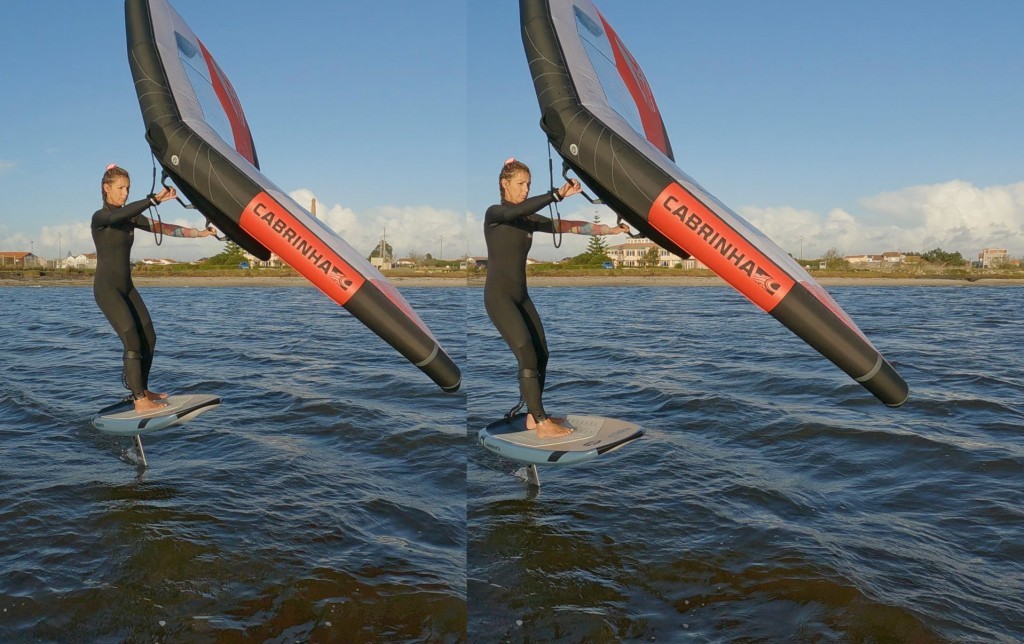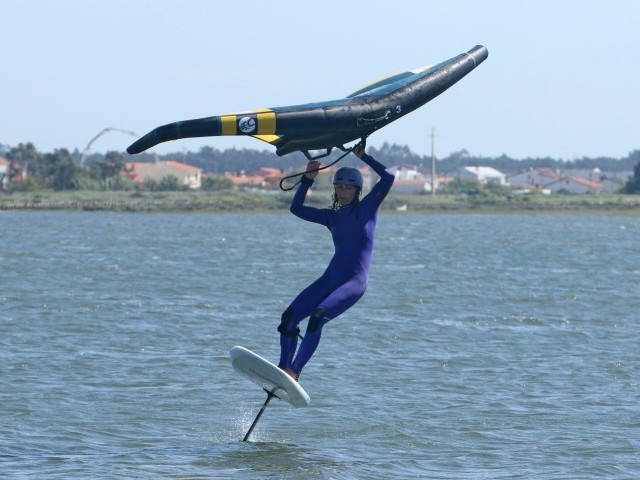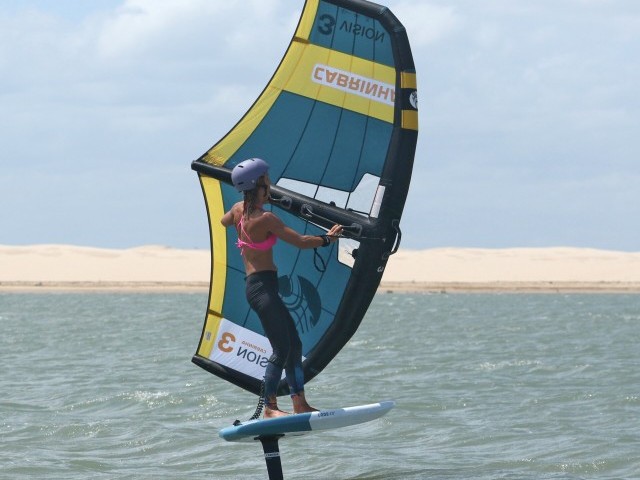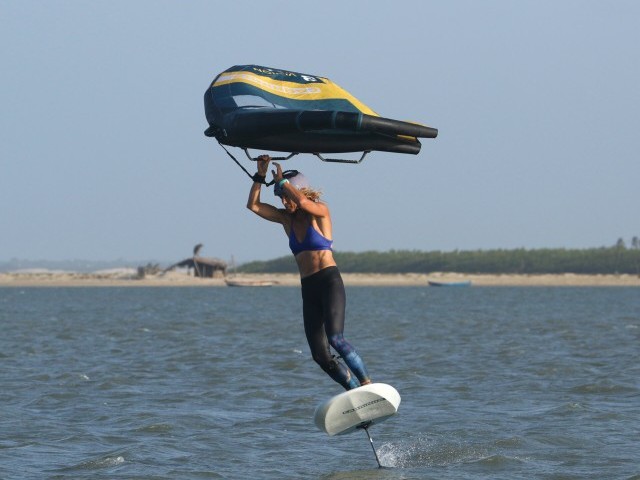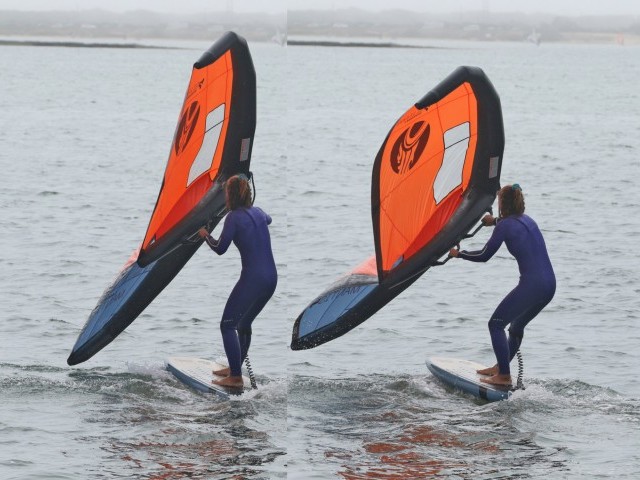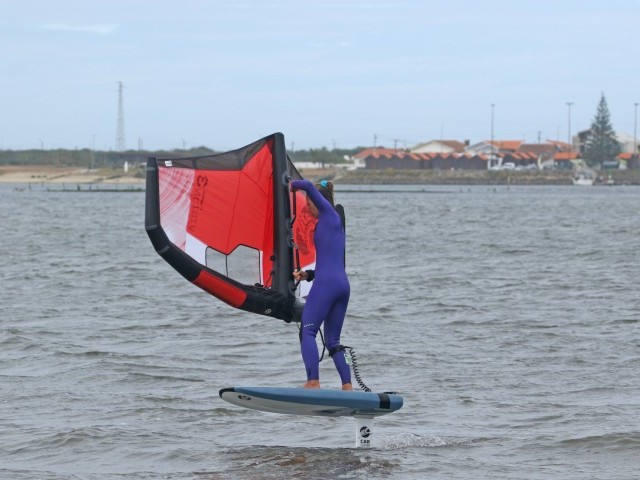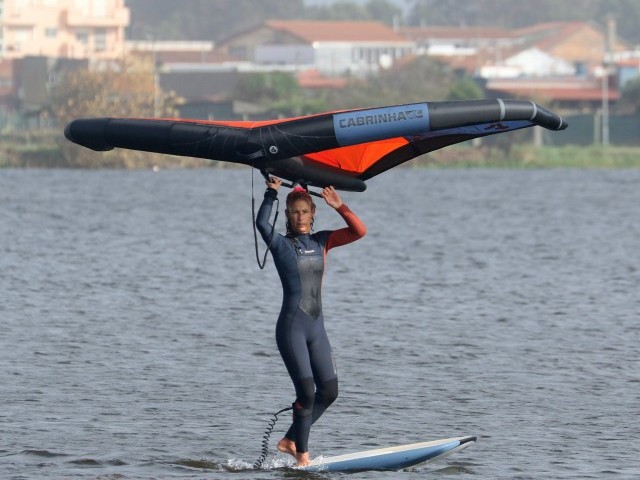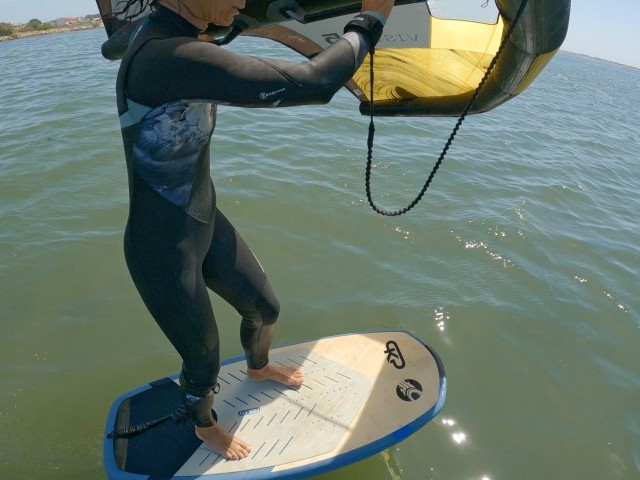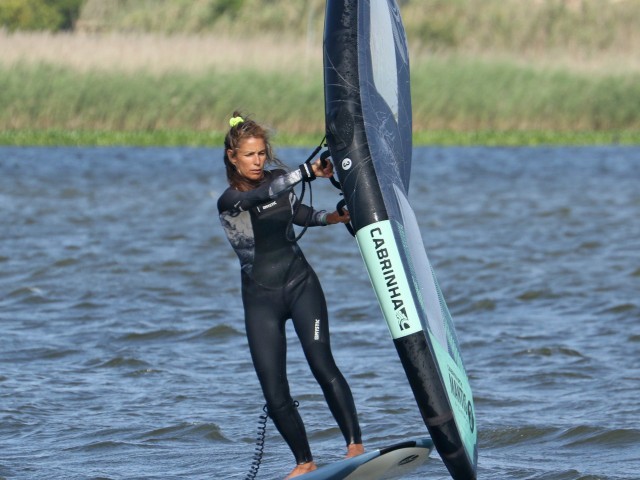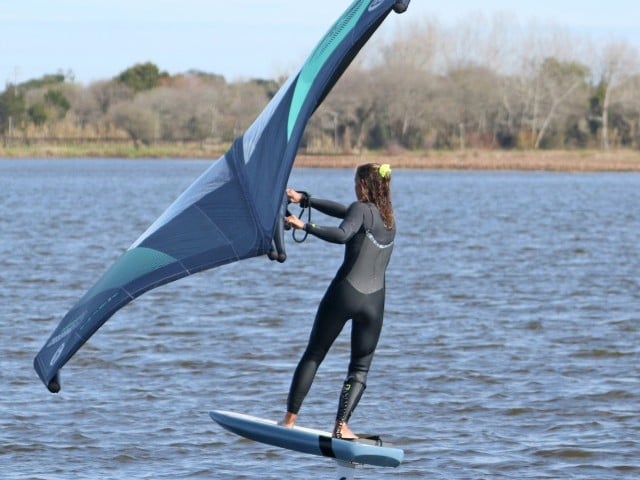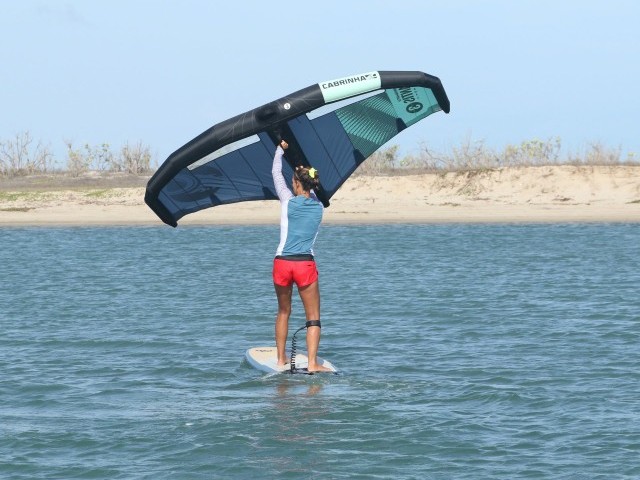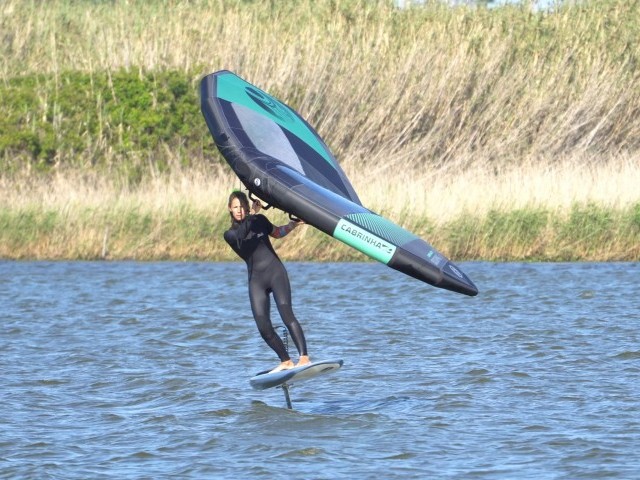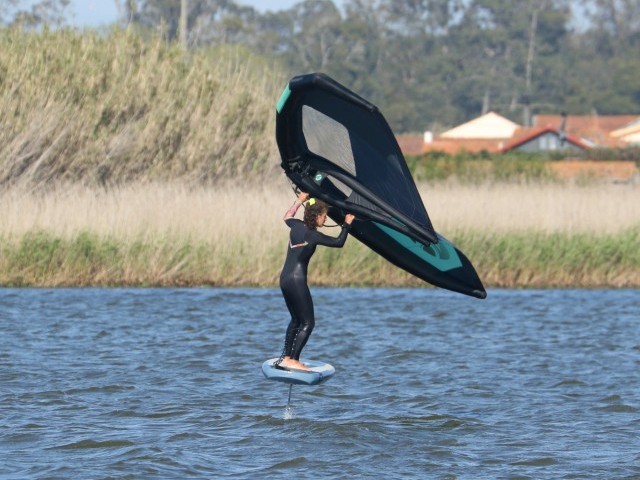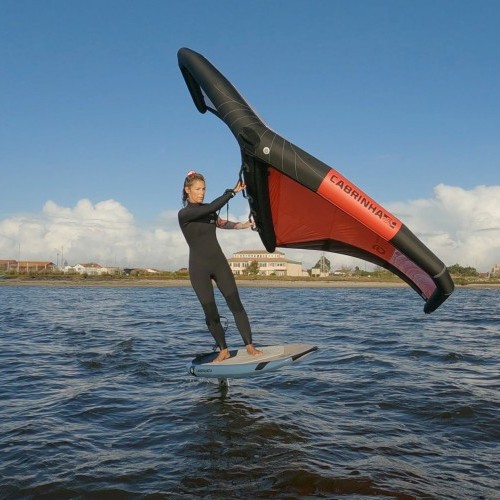
Foiling Foot Switch, Toe to Heel
Technique / Wing Foil
If you’ve been following this Wing Foil series, you’ve likely been through the heel-to-toe foot switch. Now, ladies and Gentlemen, it’s time for the other one! The Toe to Heel. This member of the family is equally useful. You can call on it any time you’re toeside to return to heelside. Whether after a gybe or tack, you’ll have the option of riding heelside in both directions.
Changing your feet from toeside does require you to have a dependable and balanced toeside. If you are happily in control, adding some steps and moving around on the board will be well within your grasp.
Once again, we’re going for the double-step method, involving three or four steps or shuffles. As your confidence grows, so will the fluency of your movement. The great news is, this is pretty much the reverse of what you learnt for the heel-to-toe. You won't be far off if you walk through your heel to toe and then retrace your steps. As such, you’ll be familiar with the steps as we take you through them.
To repeat what we said last time, there are several methods to switch feet. We rate this technique as one of the simplest, and it will once again set you up for the more advanced method further down the line, improving your relationship with the balance point of your foil.
Here are a few points to ponder that will make this more doable:
- Narrower toeside stance. Same as last time! A narrower stance will put you over the foil’s balance point. This means that when you move your feet, you’ll disturb the board less, and in turn, the board won’t surprise you. This will give you more time to place your feet, and you won’t need to rush, giving you a more consistent result.
- Open offset stance. This should be a given when toeside, but it’s worth keeping in mind. The more open you stand, the more natural it will be to move your feet and turn yourself from toeside to heelside. You’ll find it easier to unstick your feet.
- Direction of travel. You want to be on your most balanced point of sail. Generally speaking, this will ride slightly upwind or across the wind. This puts you over the board, standing on your feet, supporting yourself. It's too far upwind, and you’re more likely to lean against the wing, making moving your feet tricky at first, whilst if you bear away, the board will feel more tippy from rail to rail.
- Wing Position. This one is slightly different, the exception that proves the rule! Because you are toeside, your wing will be held further forward to help keep forward drive and the foil trimmed. To switch, you can move it up a tad, but lower than for the previous foot switch. If the wing is too high, it can pull you back as you switch feet, encouraging the nose to lift!
Let’s get down to the nitty-gritty and look at the crux moments in some detail...
Set Up. Pic A.
First and foremost, you need to be riding in a comfy toeside. As alluded to earlier, if you’re not balanced and in control, it’s probably not the best time to stand on one leg! From here, it’s a matter of incorporating all of the advantage points from above: a narrowed open off-set stance, gentle upwind course and keeping your wing forward. Here, you can see Karine cruising, comfortable and balanced in a relaxed toeside position.
Exaggerate Pic B.
If you overdo something, you’ll almost do it enough. Here’s a prime example. You want to exaggerate opening your stance so that your hips are facing the nose. If you do this, you’ve already turned your body halfway to heelside, making the footsteps more intuitive. It also encourages you to get your weight centred onto both feet, preventing the tendency to lean back a little when toeside. To get into this position, look forward and let your front hand go with the wing to pull you around a little. Karine extended her front arm and allowed the wing to pull her upright and onto both feet while also turning her body more forward. Now you’re ready.
Step 1. Both Feet Open - Back foot forward Pic C.
Your first baby step. With your weight on your front foot, step your back foot a tiny bit forward. This can be a deliberate step or a slidey shuffle. You want it angled forward. This gives you room for the next step, the incoming front foot, and it balances your board and foil rail to rail whilst opening your hips even further. By stepping slightly forward, you’re also centring yourself even more over the balance point of your foil. You can see how Karine’s back foot has moved forward and opened. While moving her foot, Karine keeps her upper body and wing still.
Step 2. Charlie Chaplin - Front foot back Pic D.
Now, with your weight on your rear foot, you can step or shuffle your front foot back right next to your rear foot. This ballet-like plie may look precarious, but you'll be surprisingly balanced because your feet are on either side of the centre line. And because you have already moved the other foot forward, you are effectively standing in the middle of the balance point or thereabouts. If you look at Karine, the nose of her board has risen a little bit, but because she’s on the balance point, it doesn’t jump up. By keeping the wing forward and her shoulders open, it won’t rise any further. This means that although this position may not be something you dream about, it’s very stable. As a result, you do not need to rush.
Step 3. Heel Side – Forward Target. Pic E.
Now, it’s all about getting into a heel-side position. Look where you want your foot to land, eyes on the prize. You should have a fairly good idea of where your front foot goes; guide it home. Step forward and allow your upper body to turn with you. This way, you’ll finish in a position that you know well. As Karine’s foot lands, you can see that the board trims nicely from nose to tail. The beauty of toeside to heelside is that you return to a natural position. Therefore, as long as the foot ends up where it should, you’ll be balanced and smiling.
Step 4. Optional Heelside Rearranging – Pic F.
Whether or not you need to take a fourth or even a fifth step or shuffle will depend on your original stance and your first two steps. If you started with a good amount of offset and got direct hits with your first two steps, you could already be in a comfy heel-side position. That said, even with a lot of practice, there’ll be plenty of times when things don’t go 100% according to plan.
It’s possible that your back foot will be a bit too offset on the downwind side and could feel a bit too far forward. If so, step back toward the centre line and the mast. If you touch down, step back for sure. Here, Karine steps her rear foot back towards the centre line touch to get into a more comfortable position. If you’re still uncomfortable, keep wiggling until you find your happy place.
Top Tips
You can see the similarities, retracing your steps from toeside to heelside. It pays dividends to practice this on terra firma. Stick your board on something soft, stand on a towel or draw a board in the sand. Get the muscle memory firing, and you’ll have less to think about once you’re on the water.
Keep your upper body and wing still, using your hips, legs and feet to move.
Make a point of being deliberate and precise with your steps or shuffles. Ensuring your feet end up in the desired location guarantees you’ll move around in the balance zone over your foil. The result is no surprise.
Aim to start in a narrow stance; this way you’ll find the balance point. This does mean that you’ll possibly need a few extra steps once you’re round to the heel side.
Use little steps and aim to get forward. It’s always preferable that you push the nose down and touch down—an easy recovery before you’re up and flying again.
With practice, you’ll find that your movements will become smoother, quicker and more comfortable, and as a result, the whole thing will feel even better.
Excellent. Look at the sequence and check out the video for the real McCoy.
Happy Switching...
C&K
This technique article was in Issue 19 of Tonic Mag.
Related
By Christian and Karine




